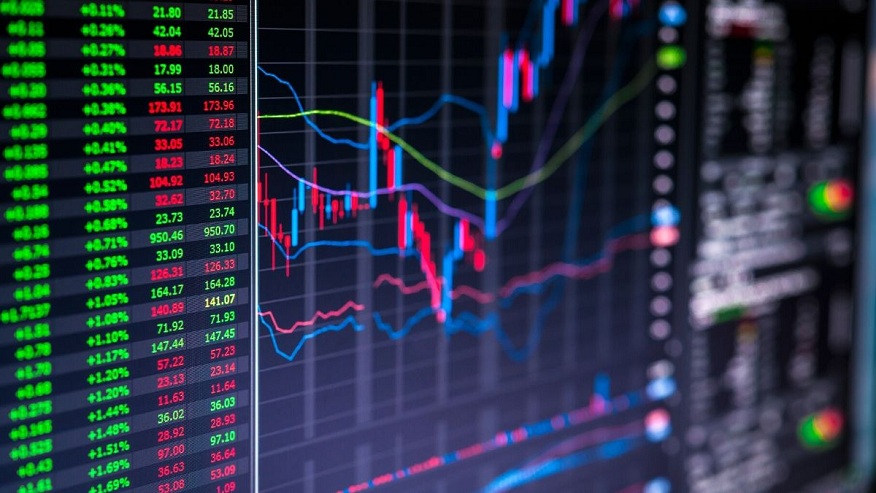The world of finance has been transformed by algorithmic trading, enabling traders to execute their strategies in ways that increase efficiency and improve profitability. Algorithmic trading can effectively navigate the dynamic and often unpredictable financial markets properly. However, optimising your algorithmic trading programs is essential to take full advantage of this potential. To learn how to evaluate the performance of algorithmic trading, read the article below.
Evaluating the Algorithmic Trading Strategies
A trader can monitor the performance of the algo trading strategy by regularly evaluating some critical indicators related to it.
Sharpe Ratio
The Sharpe ratio is a measure of risk-adjusted returns from an investment strategy. It is computed by deducting the expected return of the investment strategy from the risk-free rate of return, which is the return on government security, or G-sec in India, and dividing the result by the standard deviation of the strategy’s returns.
The Sharpe Ratio will help you determine whether the strategy’s returns are based on sound investment decisions or only come about due to taking too much risk. A higher Sharpe Ratio indicates an enhanced risk-adjusted return, while a lower ratio implies that the strategy may be unnecessary. A Sharpe ratio of 1 or more indicates that your portfolio is producing a higher rate of return than the regular riskless asset, such as treasury bonds. In most cases, however, a Sharpe Ratio of less than 0.5.-0.6 is considered acceptable.
Maximum Drawback
The maximum drawdown is a risk metric measuring the maximum loss an algorithmic trading strategy has experienced from its highest to its lowest portfolio value. To help investors and traders understand the strategy’s historical performance, it is used to assess the potential downside risk of a trading strategy.
The maximum drawdown measures the potential downside risk for trading strategies. During a period of high market volatility higher the maximum level of withdrawal, the greater is the potential loss of an investor. Reducing the complete annual withdrawal is more advantageous. It indicates that an investment or trading strategy has less downside risk. Nevertheless, some investors or traders may be willing to take a more significant maximum withdrawal in exchange for higher returns.
Win Rate
A performance metric called win rate calculates the proportion of profitable deals to all the trades made using a specific trading strategy. This measures the trading strategy’s ability to make profitable trades, often relied upon when assessing its historical performance. The win rate gives you a measure of your trading strategy’s ability to generate profitable businesses. The percentage of good companies caused by the system increases with the increase in the winning rate.
In particular, it should be noted that the desirable performance of your trading strategy is not guaranteed by an increasing win rate alone. Other performance metrics, such as the mean size of wins, loss severity and risk-adjusted returns, need to be considered. If the average win size is significantly above the average loss, accepting a lower winning percentage may be possible. This is because several big winning trades can offset many small losing trades, resulting in a total profit for you.
Average Trade
The average trade is a granular performance metric that measures each trade’s average profit or loss executed by an algorithm trading strategy. It is calculated by dividing the net profit or loss from a strategy by the number of transactions made.
The average profitability of each trade carried out in the trading strategy is measured. A positive average trade value indicates that your strategy generated an average profit for each trade executed. In contrast, a negative average trade value means your strategy caused an average loss for each trade executed. Average transactions can be used to measure the ability of an algorithm trading strategy to generate profits or losses for each transaction executed.
Profit Factor
The profit factor is an operational performance metric used in algorithmic trading to measure the ratio of gross profits to net losses generated by a trading strategy. It is calculated by dividing the sum of gross earnings by the sum of losses. The profit factor measures your trading strategy’s ability to generate income. The higher the profit factor, the more profitable the strategy is compared to the amount of losses incurred, while the lower the profit factor, the less profitable the strategy is.
Conclusion
The high volume of transactions with algo trading programs enhances its ability to earn profits and losses. This means you must notice and resolve any small inconsistencies in your strategy. To ensure that you take on a manageable risk of investments, periodic performance evaluations help monitor your strategy and avoid unnecessary risks. To start algorithmic strategies, check out Share India, one of the best stock market trading app. The platform offers a wide range of trading tools and all the essential indicators. They will help you to trade take a leap in the world of algo trading.

